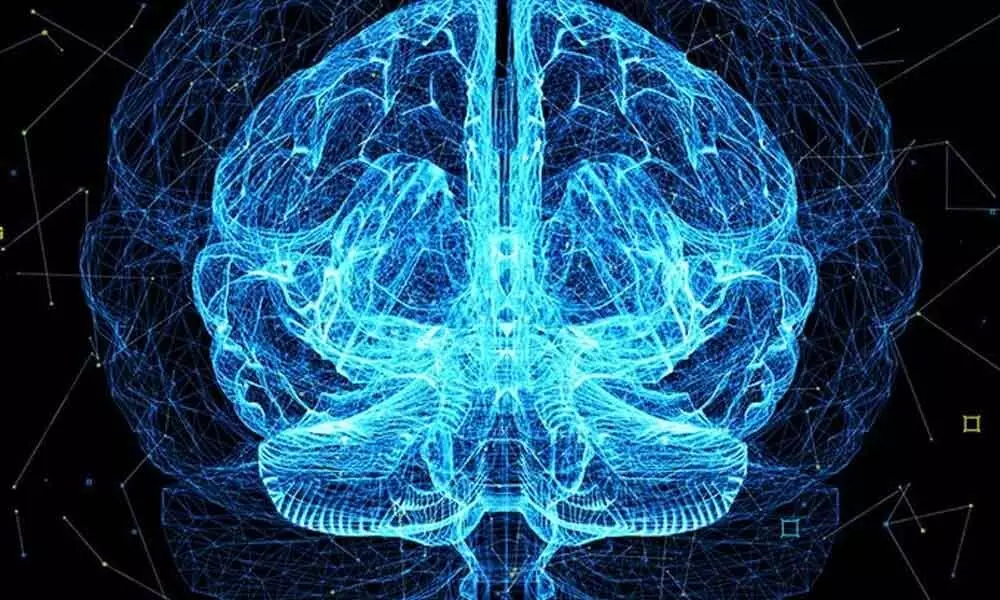Live
- Time to boost measures to prevent drowning, save children: WHO
- TDP achieves milestone with 73 lakhs membership registration, says Chandrababu
- South Korea: Main Oppn hails Yoon's impeachment motion passage as 'victory for people, democracy'
- RG Kar issue: Tension flared over parallel protests by Congress, SUCI(C) outside CBI offices
- After furore, Central Railway revokes order to raze Lord Hanuman Temple at Dadar
- Now hoteliers' body in Bengal's Alipurduar shut doors for Bangladeshi tourists
- District Collector Encourages Students to Utilize Government Facilities for a Better Future
- Per capita availability of fruits, vegetables increases in India
- FII buying reaches Rs 22,765 crore in Dec as economic growth stays resilient
- National Energy Conservation Day 2024: Date, Importance, and Easy Ways to Save Energy
Just In
Memory Formation Have Been Discovered By Neuroscientists


- Two types of human brain cells that physically aid memory formation have been uncovered by researchers.
- The researchers acquired information from epilepsy patients who had electrodes surgically placed in their brains to pinpoint the location of their episodes.
Two types of human brain cells that physically aid memory formation have been uncovered by researchers. These cells are important for segmenting continuous conscious experience into discrete segments that can be remembered later.
The researchers acquired information from epilepsy patients who had electrodes surgically placed in their brains to pinpoint the location of their episodes.
Humans generate autobiographical memories, connection features of themselves in a particular place and time – as they journey from the past, through the present, and into the future. Humans sew these threads together to construct a continuous narrative of themself because these memories are chunky, with obvious beginnings and endings.
Most memories have distinct boundaries, similar to how people perceive objects and entities in the world, and neuroscientists in a recent study wonder if the neurophysiological creation of memories reflects the discrete character of memories in our conscious experience.
Since to these effective intracranial electrodes, epilepsy patients frequently participate in neuroscientific investigations with their consent. They allowed researchers to monitor individual neurons' activity while patients watched film segments with 'cognitive limits.' While these limits may be complicated and less visible in our daily lives, scientists concentrated on 'hard' and'soft' boundaries for research reasons.
Researchers discovered two types of cells that responded to cognitive limits: "border cells," which responded to both soft and hard boundaries, and "event cells," which only responded to hard boundaries.
Ueli Rutishauser, a neurosurgeon at Cedars-Sinai hospital, interim director of the Center for Neural Science and Medicine, and co-author of the study and his colleagues believe that the brain reaches the state of establishing a new memory whenever the exercise of incident and boundary cells peaks after a hard border when both cells fire.
He explained that creating a new folder on your computer is similar to a boundary response. After that, you can put files in there. When a new border presents itself, you close the first folder and start a new one. The peaks of neural response at these boundaries are used by the brain to find the proper folder when it needs to review a memory. He added that brain cells fire when you try to recall something.
After that, the memory system compares the sequence of activity to all prior firing peaks that occurred immediately after boundaries. It opens that document if it finds one that is similar. People travel back in time for a few seconds, and events that occurred at that moment become clear.
The researchers then put their theory to the test by asking individuals if they'd observed various pictures in the video clips. Participants were more likely to recall visuals that closely followed a hard or soft boundary, at a period when a new memory was being formed, confirming the researchers' suspicions.
Participants could better recall the order of images they had seen because the event cells fired in time with one of the brain's inherent rhythms, the theta rhythm - a wave pattern of neurological activity involved with learning, memory, and navigation. Researchers believe that firing event cells in synchronisation with theta rhythm creates time-based linkages across memory compartments.
As a result, event cells tend to assist us in establishing the temporal order of our memories, whereas border cells appear to be more engaged in memory recognition.

© 2024 Hyderabad Media House Limited/The Hans India. All rights reserved. Powered by hocalwire.com






